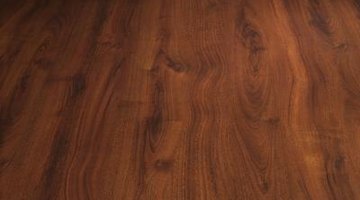What Oil To Use for Cherry Wood
Cherry wood is one of the more difficult woods to finish due to the fact that the wood has a high grain discrepancy. This means the wood varies from extremely hard and non-porous to very soft and porous in other sections. You use natural oils as a finish, which allows you a greater level of control over the end result since you can re-apply the oil as needed.
Types of Oils

There are several types of oils you can use for working with cherry wood, ranging from walnut to linseed to tung oil. The latter two are the most commonly used for woods of all types. Finish oils are unique in that they harden when they dry, which makes them ideal to use as a finish coat for woods like cherry, since they add a protective layer. They are also ideal because they are all-natural rather than chemical.
Preparation
While softer woods require sanding, sealing and pre-filling before any type of finish is applied, cherry wood generally does not. Since it is a close-pored, tight-grained wood, all you need to do is sand it smooth before you apply the oils. However, one thing to note about oil finishes is that once they are applied they will cause the surface of the wood to puff up slightly, or swell, and additional sanding is necessary.
Finishing
The best method for finishing off cherry wood with oil is to apply the oil and let it dry for 24 hours. On the following day, smooth down the surface with steel wool and oil that has been thinned down slightly with mineral spirits. For the porous sections of the wood, you will use less oil than on the non-porous sections, and you will need to apply multiple coats, allowing each coat to dry for 24 hours. The process needs to be repeated for around a week until you notice the floor finally taking on that lustrous finish you are looking for.
Quality of the Oil
When you are purchasing your oil for cherry wood, you need to check that the oil is still good. Since oil is a natural product, it can go rancid, or turn bad, if it isn’t stored properly. Oils should always be stored in a cool, dark place. You can tell if an oil is bad because it will have blotchy sections in the container and when opened, it will have a distinctly rancid scent.
Resources
Writer Bio
Tim Anderson has been freelance writing since 2007. His has been published online through GTV Magazine, Home Anatomy, TravBuddy, MMO Hub, Killer Guides and the Delegate2 group. He spent more than 15 years as a third-generation tile and stone contractor before transitioning into freelance writing.
Photo Credits
- Brand X Pictures/Brand X Pictures/Getty Images
More Articles



